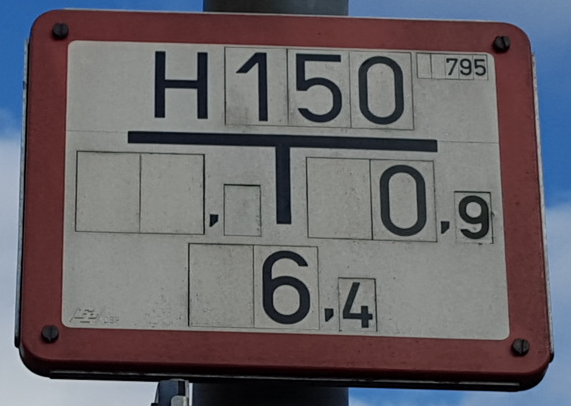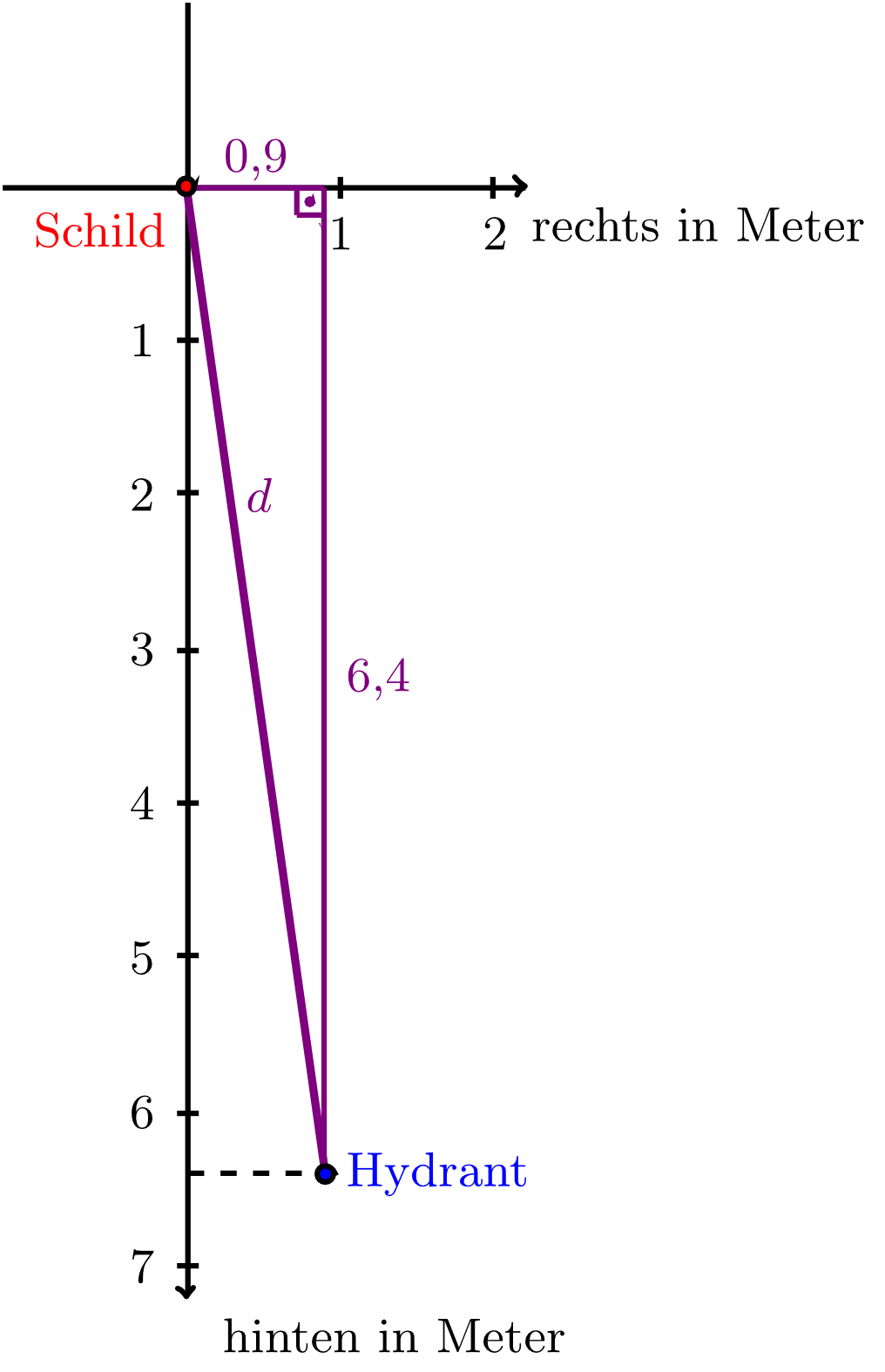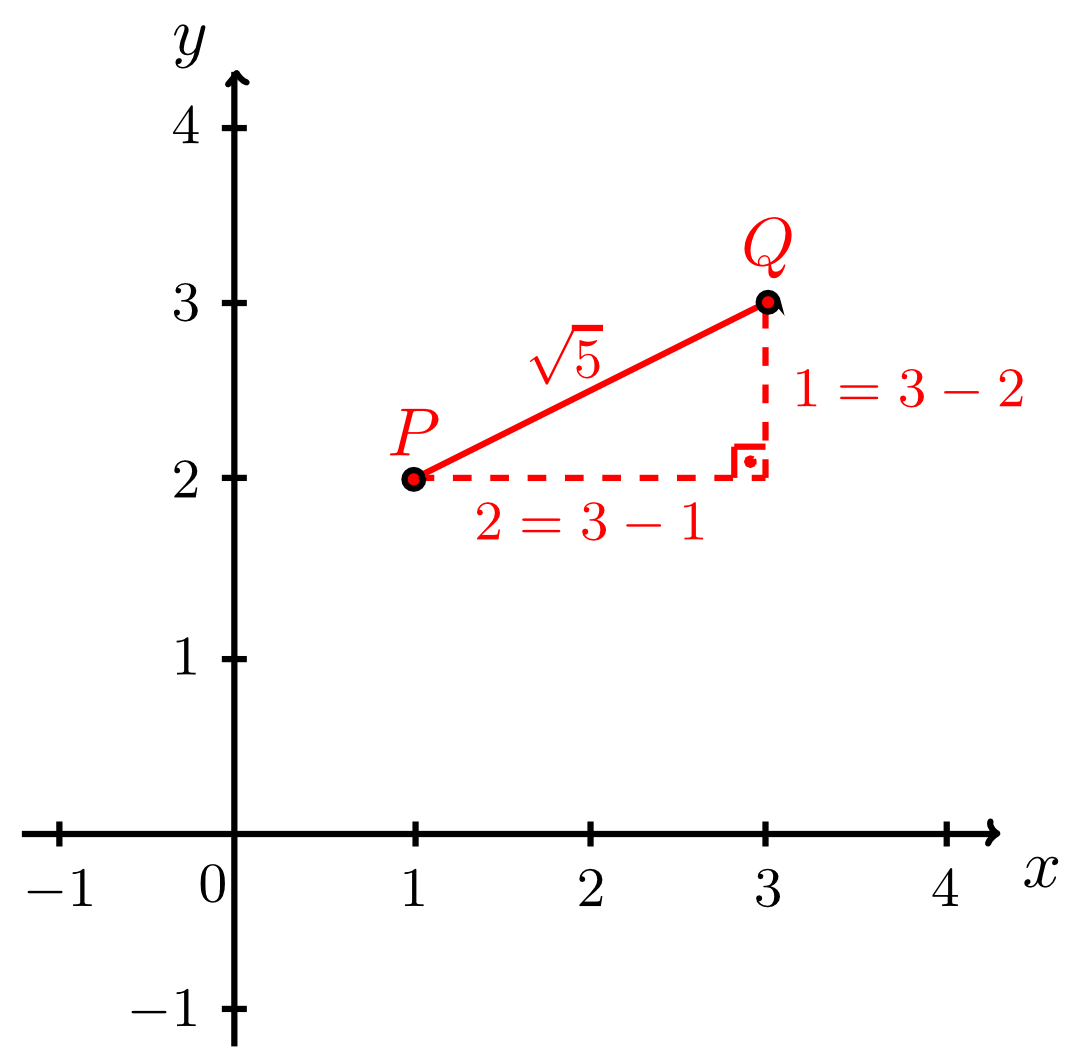Chapter 9 Objects in the Two-Dimensional Coordinate System
Section 9.3 Circles in the Plane9.3.2 Distance and Length of a Line Segment
If we recall the first example of a hydrant in Section 9.1.1, we see that we are now able to specify the position of the hydrant in a coordinate system by means of the data given on the hydrant's plate. However, if we are interested in the distance of the hydrant from the plate, then we have to calculate this distance from the coordinates.

For this purpose, Pythagoras' theorem is useful:
For the distance between the plate and the hydrant, we have
Thus, the distance can be calculated (approximately):
The distance between the plate and the hydrant is (measured in the unit lengths of metres) about 6 metres and 46 centimetres. For purely mathematical purposes, the unit length is not relevant, and that we will omit it again from here onwards.
The example of the plate and the hydrant above can easily be generalised. The distance between two points in can always be determined using an appropriate right triangle and Pythagoras' theorem.
Thus, the distance between two points in the plane can be calculated by determining the side lengths of a right triangle from their abscissas and ordinates and then applying Pythagoras' theorem. Furthermore, it is obvious from Example 9.3.1 above that the distance between the points and equals the length of a finite segment of the line , namely the segment between and . This finite segment of the line is called line segment between and and is denoted by the symbol . The length of the line segment is the distance between and and is denoted by the symbol .
Two points have the distance zero if they coincide.
Exercise 9.3.3
- Calculate the distance between the two points and .
- Calculate the square of the distance between the two points and depending on .
- Calculate the coordinates of the point in the third quadrant that has the distance from the point and lies on the line with the slope that passes through the point .
 Onlinebrückenkurs Mathematik
Onlinebrückenkurs Mathematik

